
By RaeAnn Slaybaugh
Our roundtable panel:
Contacta, Inc.: Richard McKinley, Managing Director
Hearing Loss Association of America (HLAA): Edward F. Ogiba, Director of Chapter Development
Listen Technologies: Peter Papageorge, Director of Sales; Maile Keone, Vice President, Marketing
Sennheiser Electronic Corporation: Vanessa Jensen, Sr. Product Specialist, Integrated Systems
Williams Sound: Janet Beckman, VP Marketing; Anthony Braun, VP of U.S. Sales
Truly accessible churches accommodate all worshippers. If members or guests can’t hear the sermon, they’re likely to start going to a different church — or, worse, stop attending services altogether.
That’s why Church Executive has placed a premium of covering the topic of hearing-accessible, inclusive worship. Here, a panel of experts in this field explains why it’s so critical to be proactive — and how to take the first steps in a hearing-accessible direction.
What risks does a church face if it fails to proactively plan to accommodate worshippers with hearing loss?
Jensen: Loss of message and potential members. Perhaps more importantly, though, is the self-detachment that a person with hearing loss may engage in as a result of his or her disability.
Papageorge: I agree: People will stop going to worship services. But, it’s important to point out that this risk isn’t exclusive to a certain demographic or age group.
Ogiba: True. In any community, about 20 percent of the population has hearing loss. On a national basis, there are some 48 million of us. Our soft research says people can miss anywhere from 20 percent to 50 percent of what’s said at worship services. So, a significant number start cutting back, or going to church less often.
It’s a big loss — but also a big opportunity if you’re one of the churches in your community that takes an extra step towards hearing accessibility.
McKinley: In some cases, we also see a migration from one church — which doesn’t offer assistive listening systems — to another church that does.
Beckman: Obviously, a church is a community that wants to be inclusive, whether it’s for people with hearing loss or any other kind of disability.
Keone: We all talk about attendance dropping off; but, I really think it’s more complex an equation. If a church is growing, it might not even know it’s losing those people. So, a church is at risk just by not understanding its membership and their needs, especially related to hearing accessibility.
Braun: If a church that’s subject to Americans with Disabilities Act (ADA) regulations for hearing assistance doesn’t satisfy those requirements, it runs the risk of individuals reporting the non-compliance to the ADA. When a complaint is registered, it is — minimally — bad PR for the church that could result in loss of members. An unresolved complaint may also force a church into a timeline for compliance in order to avoid fines or a lawsuit.
At what point do churches typically enlist accessible-audio professionals — like you — for guidance?
Jensen: Key factors include suggestions, complaints, referrals, self-advocacy or a financial gift. Typically, in my experience, the worship leader, technical director or individual with hearing loss initiates the call to us for our guidance on a solution.
Braun: There are a few key triggers, in our experience. First, most churches are exempt from ADA regulations unless they make their house of worship available to the public — if they rent it out, for example. Second, if a significant expansion or remodel is in planned; if more than 65 percent of the space is being reworked, ADA’s regulations kick in. Finally, members with hearing loss speak up, or poor acoustics might be an issue. In these spaces, it can be tough to hear because of background noise and distance to the audio source (even if a worshipper doesn’t have a hearing problem).
Papageorge: We’re often enlisted when churches want to upgrade their audio systems, or if there are concerns regarding audio clarity. Upon further investigation, it might be an acoustically perfect system — but, the church doesn’t know the history of the hearing loss; namely, that it has nothing to do with the room. It has nothing to do with the sound system. It has something to do with my personal hearing loss, and only direct sound to my ear can fix that.
Ogiba: In my experience, churches need to be approached and learn about the opportunity that way. They respond well to the idea that providing access helps them build their congregations. Churches which offer special needs music programs or even lecture series are often the most amenable to talking about access and using it in a proper way.
McKinley: In churches, about 90 percent of our systems are sold because of a wow! moment. Somebody went to another church’s worship service and found they’d never heard so well in their life. Then, he or she brings it — as a gift — to their own church. We’ve worked with 1,000-seat churches where one check paid for the whole assistive listening system (ALS).
Papageorge: People with hearing loss are prone to just quietly enduring their inability to interpret the worship service. My father-in-law is a classic example: He not only stopped going to church, but also to movies, lectures and so on. The day he got fitted with the proper hearing device was the day he went back to all of them.
Beckman: If you look at the history of hearing loss, there’s a whole population of people — even today — that don’t opt to wear a hearing aid. They don’t realize they have hearing loss, or they’re in denial, or they have higher priorities. Or, they see having hearing loss as some kind of personal failure. It’s why they call it “the invisible disability.”
So, there’s a large segment of the population that can be served, some of whom don’t even have hearing aids. It’s at the root of why all of us on this roundtable want to get our products in their hands — so they can have those wow! moments.
Ogiba: [Beckman] is correct. While 48 million people in this country have hearing loss, 41 million are basically doing nothing about it. But, we’re seeing all sorts of new, fabulous assistive listening devices come to market. A hearing loop system, for example — once people try it, they’re often encouraged to get the treatment they need. One of the most interesting facets of a loop system is that you don’t need a hearing aid to try it. People can become aware, firsthand, that it’s really not a “hearing problem” they have — it’s an understanding problem. Usually, the loudness or volume at the church is fine; it’s the clarity that’s all mixed up for those of us with hearing loss. When we miss every third or fourth word, the Gospel makes no sense. But, when you get the tools you need — and complement those with an access system — the world is open to you.
Beckman: We know that only 6 million of the 27 million people in this country who could benefit from the use of hearing aids actually use them. For the most part, hearing loss is invisible. Often, these people don’t seek help, and denial of the problem is common.
Braun: Additionally, about 15 percent of Americans ages 15-29 have some kind of high-frequency hearing loss. If you put everyone with hearing issues in one place, it would be the biggest state in the U.S.
How can a church evaluate if its current audio setup is accommodating to members with hearing loss?
Jensen: A church must understand that loudness doesn’t equate to hearing accessibility. People with hearing loss need clear, intelligible audio.
McKinley: So often, we contend with a psychology of “ticking the box.” In a church, it comes down to a decision between committing to care about all the users of these systems, or to simply tick the box that says, “We’re accessible.” You can do the latter with minimal amount of work, for a minimal amount of money. But, it doesn’t always come down to minimums.
Papageorge: I would like to discuss something that most churches may not consider, and that’s to help the congregation become more aware of ALS availability. Whether it’s a megachurch or your local 150-seat parish, amazing technology is available for assistive listening. Prepare the volunteer staff to know where the assistive-listening components are located and how to use them.
Ogiba: It really starts, for me, with the consumer. The majority of people who have hearing aids see that as a final solution. So, many are disappointed when their hearing isn’t restored to what it was when they were 18. Most don’t realize there’s all this added technology that really can complement what they already have.
I’m a perfect example. I wear a hearing aid and have an implant, but I would not survive without eight or nine other devices. I couldn’t enjoy meetings without a loop system, and the same goes for attending services at my church. I would miss movies without the captions. I would not be participating in this phone call right now if I didn’t have a caption phone. The list goes on. For more insight on hearing technology and support for individual consumers, visit Hearing Loss Association of America (HLAA) at
www.hearingloss.org.
What are some ways a church can effectively let people know hearing-accessible options are available?
Keone: As vendors, technologists and advocates of these systems, I’m going to make a blanket statement: I think we do a very poor job of this, frankly. We tend to sell our technology and move on the next deal. I think all of us could do a better job of helping the churches. While many of them are great marketers, many others are not.
Papageorge: It’s also about coordinating with organizations like the HLAA. It’s amazing when you start to connect the audiologists to churches, A/V integrators and consultants. Many times, I find audiologists who are unaware of the t-coil option for hearing aids, which is essential for loop solutions. Oftentimes, we have to increase awareness together to make a difference.
But again, bringing all the parties together for awareness of what? It’s not about the equipment; it’s about solutions. Who cares what technology is used as long as it helps those with hearing loss while expanding the awareness to reach others in need.
An implementation of an ALS solution needs to assure the church that their service schedule will not be interrupted, which is a typical concern for hearing loop systems. We always ensure that our team of certified loop installers are prepared to install loop systems to the IEC60118 standard within the scheduled time allowed.
Ogiba: We went from zero to well over 100 looped facilities in Sarasota in less than two years, and most of them were churches. Yes, the signage somewhere near the front door was a piece of the puzzle. Yes, something in the church bulletin was a piece of the puzzle. But by far, the most important piece was giving the ushers some basic training.
Beckman: Love the suggestion of usher training. We do workshops with church audio guys across the nation to teach them and their churches how to make part of the worship service. There’s a lot of creative ways to make it something that feels like a mission, not a burden.
Jensen: Signage and word of mouth are also very effective methods of communicating the availability of hearing-assist systems.
Ogiba: Getting the system right is incredibly important. But once that’s accomplished, the best marketing tool I’ve seen is when the pastor talks about the fact that a hearing loop, for example, is available.
What are some of the most common barriers churches with existing facilities face when trying to accommodate worshippers with hearing loss?
Papageorge: A church wants to make sure it’s not interrupting its services. And sometimes, it’s a challenge to secure the funds and get buy-in.
McKinley: One barrier is lack of awareness of the issue. I was at a meeting recently with a 1,700-seat church. The pastor said, “I don’t know three people who have hearing aids in my church.” After I picked myself up off the floor, I said, “Either that, or your church is so loud that they’ve all decided to go home because they can’t experience the service.”
Interestingly, when we walked out into the lobby, there were four visitors, all of them wearing hearing aids. I think it shocked him to know that those people probably wouldn’t stay or participate due to a lack of accessibility.
Beckman: Another barrier is architectural. Sometimes, a building itself — depending on the kind of technology they’re looking at — presents barriers.
Papageorge: I really believe this is where technology can help. There’s a solution for every church. Granted, we’ve installed thousands of loop systems, but there are churches with architectural issues where a loop system isn’t technically possible. We have suggested alternative technologies to solve the problem, including Infrared, RF and WiFi, but even these need to be applied correctly. Our new IDSP solution addresses the ease of dispensing and equipment maintenance in addition to greatly enhancing the overall personal church experience. The iDSP integrated neck loop / lanyard gives T-coil hearing aid users a listening experience comparable to an installed hearing loop. This new receiver works with any standard 72 MHz RF system on the market; and by adding these new receivers, it can change the performance of any ALS system without replacing it.
What technologies are churches implementing to overcome these barriers?
Jensen: There are a variety of technologies to choose from — installed loop systems, infrared systems, RF systems, closed-captioning systems, WiFi systems. Each system offers unique benefits. Depending on the church’s needs, one system might prove more applicable. For example, it is very important to keep in mind that there are solutions outside of the installed loop system. While these systems may be more discrete in form and function, they often require significant construction and can be quite costly. As technology advances, I anticipate great advancements in assistive-listening solutions that will benefit individuals with hearing loss.
Braun: Our Hearing HotSpot™ WiFi live audio streaming technology is appealing because it’s discrete and leverages the devices worshippers already have: Apple and Android smartphones. There are no sanitary issues; they can use their own earbuds. And, the process is as simple as connecting to WiFi, downloading an app, and picking a channel. They know what channel to use because worship leaders announce it; promotional materials are also available from our company, as is simple signage. This tool is also used often for language interpretation.
As a bonus, this gives church leaders the ability to push messages directly to the users of this technology, or the “app owners.”
Beckman: It’s also very scalable. Keep in mind that a church’s existing WiFi setup might need to be upgraded. And, in a stadium-size worship space, the initial investment might be significantly more.
Ogiba: I think it is incumbent upon us to focus on the right numbers; it’s not just a function of cost.
In my own community here, there are 135,000 people with hearing loss. I know a great number of them have cut back significantly — and even stopped — going to services.
It’s very easy to catch people with hearing loss’s attention if you’re a church that’s actively marketing its assistive listening offerings. It can attract some 20 percent of the population that might be ignoring the church simply because they don’t understand what’s being said there.
Are there discrete ways to accommodate worshippers with hearing loss — again with “inclusion” being the ultimate goal?
Beckman: It’s really a mind-set of incorporating hearing accessibility into your church’s small groups everything it does.
Braun: So often, accessibility tools aren’t even fired up, let alone promoted. Roughly 20 percent of the American population 12 and older has some kind of hearing loss.
Beckman: We partner with WorshipMD to educate tech people in churches on the topic of accessibility. It takes one person at a time to make some progress. It’s a little like evangelizing: Often, it takes the issue personally affecting you, to make you make someone else aware.
Papageorge: What’s the ultimate discretion? The ability to walk in and not have to ask for anything. That’s the best solution possible. When that’s not an option, though, it’s important that pastors know there’s a solution for every church.
Our roundtable panel:
-
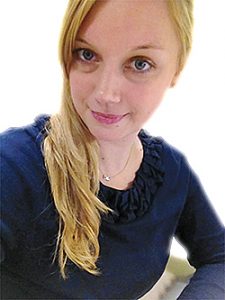
Vanessa Jensen, Sennheiser Electronic Corp.: Sr. Product Specialist,
Integrated Systems
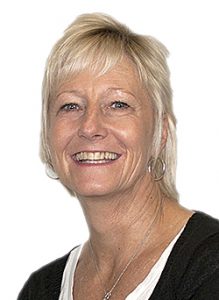
VP of U.S. Sales
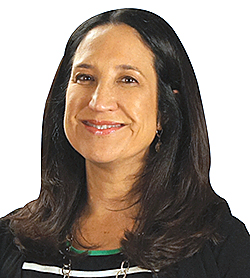
Listen Technologies:
VP of Marketing
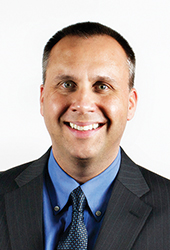
Williams Sound:
VP of U.S. Sales
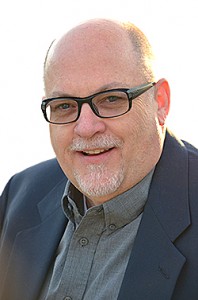
Managing Director
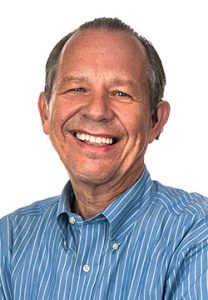
Hearing Loss Association of America (HLAA): Director of Chapter Development
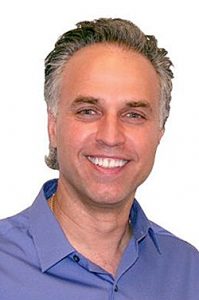
Director of Sales


